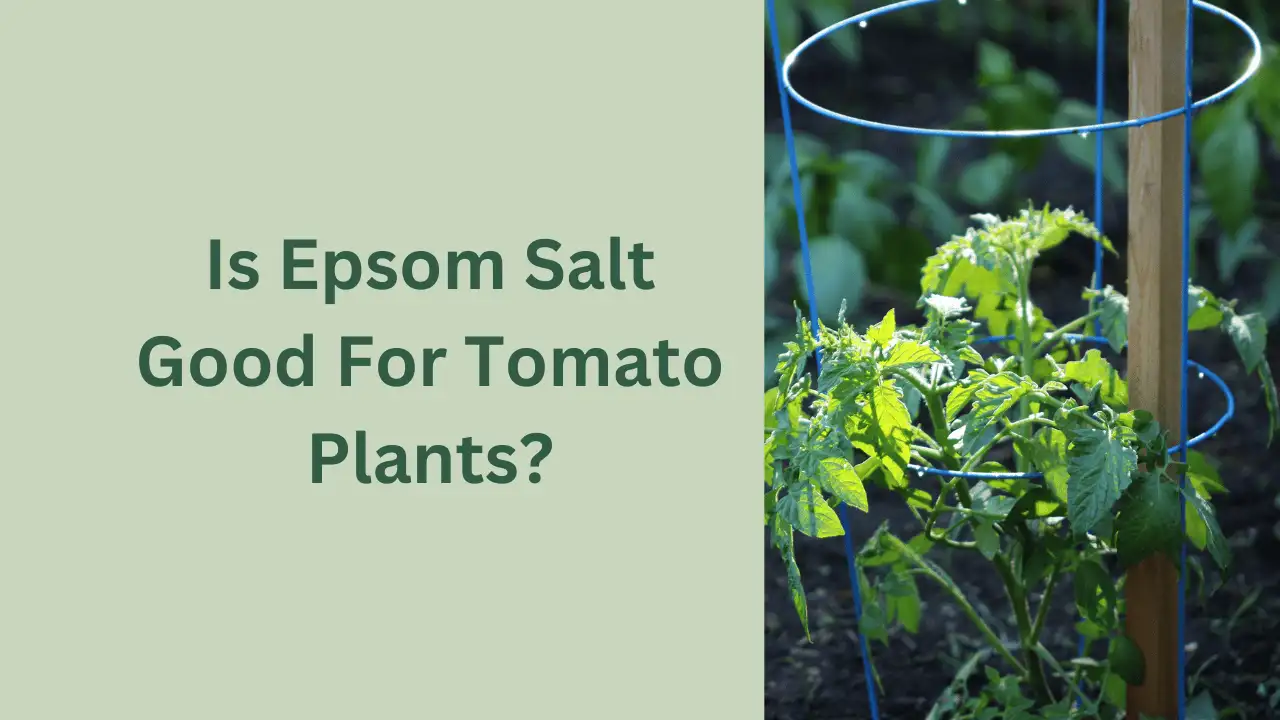Do you want to enhance the growth and development of your tomato plants with Epsom Salt but are wondering whether it will benefit your tomatoes or worsen their condition? Yes! It is a controversial topic.
Tomato is a unique vegetable grown in home gardens. Its tangy and little sweet taste makes it delicious and also contributes vital ingredients in many of the recipes. It becomes more special and organic when you grow it in your own vegetable garden rather than purchasing it from the stores.
Most gardeners always try to find different ways to maximize their quality tomato production. It is often suggested to add Epsom salt before planting your tomatoes. But are they really good at growing tomatoes on your tomato plant more effectively?
There are certain myths and facts about using Epsom Salt for your tomato plant which I have cleared up in this article.
Before that, it is important to know what Epsom Salt is. It is a mineral salt containing Magnesium and magnesium sulfate and was founded 400 years ago in England. It is a non-edible table salt. It is used in baths to relieve stress or cure sore muscles and is sometimes used as a garden supplement.
Short Answer: Yes, it is true that tomatoes do extremely well when Epsom salt is used only when there is magnesium deficiency, but it may not be effective in other cases. It can fulfil the need for Magnesium for your tomato plants which helps to produce the chlorophyll necessary for photosynthesis. It also helps to uptake other nutrients like nitrogen and phosphorus, which plays a vital role in plant development and growth.
In this article, I have discussed whether it would suit your tomatoes and whether they would benefit from this uncommon salt.
Also, check Are Coffee Grounds Good for Tomato Plants?
What Can Epsom Salt Do For Tomato Plants?
1. Fix Yellowing Tomato Leaves
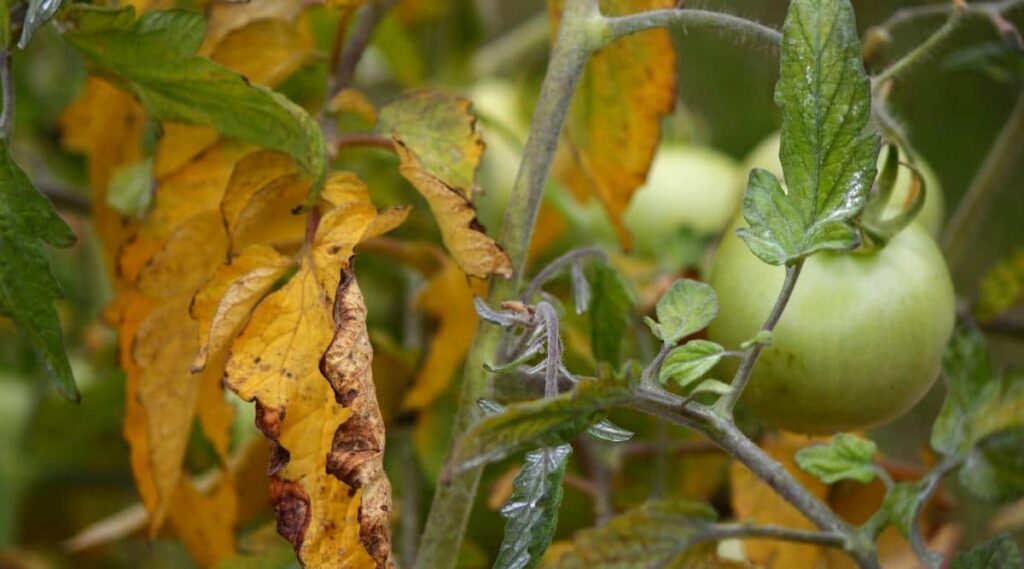
You would obviously feel sad to see your tomato plant leaves turning yellow. It can turn to yellowing leaves because of plenty of reasons. It may be over or under-watering, soil compaction, lack of other nutrition, insects, pest infection or diseases and many more. Most of these problems are solvable.
But when your tomato plants suffer from magnesium deficiency, the leaves would turn yellow very differently. Only veins of the leaf margin remain green, and other parts of the leaf turn yellow in a lighter shade. This kind of leaf becomes inefficient in directly generating chlorophyll and urgently require Magnesium at the earliest.
In such a scenario, adding Epsom salt to the soil removes the deficiency of Magnesium in the plants. It balances the magnesium level in the soil and helps restore the plants green leaves’ green color.
Its application is very easy. Add one tablespoon of Epsom salt with a gallon of warm water. And spray directly on the leaves and stem.
When the plant is entirely covered with Epsom salt solution, you can use the remaining gallon of water solution to water the soil. The best time for its application is in the morning as the plant has enough time to get dry, Epsom salt spray gets absorbed efficiently, and you can also avoid the risk of sunburn.
With the spray of Epsom salt, you can easily add Magnesium directly to the soil and tomatoes. It is best to purchase a soil test kit and check the level of Magnesium in your soil and confirm whether your tomatoes are getting good nutrition.
But please be specific about using Epsom salt in moderation, or else it would lead to magnesium toxicity which can worsen your tomato plants.
You can add Magnesium to the soil when planting the tomatoes, and later you can add it to tomatoes once every two weeks when they begin to fruit.
2. Improve Fruits flavor
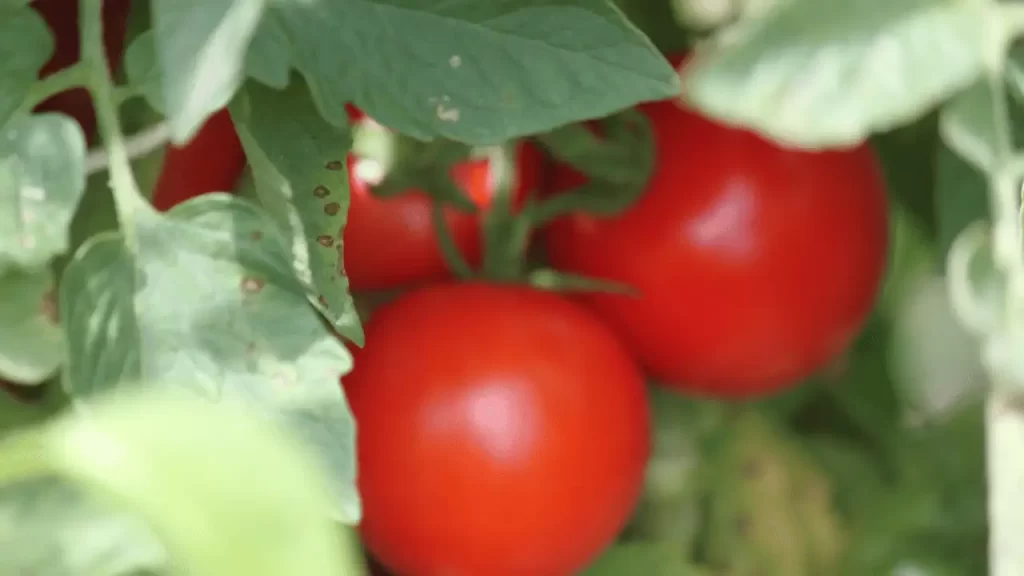
Who doesn’t love flavorful and delicious tomatoes? A good addition of flavor makes the tomatoes tastier. Indeed, you usually cannot get flavorful tomatoes from the stores.
Adding micronutrient solids, including Magnesium and sulfur to the soil adds more flavor to the tomatoes and even results in healthier plants.
Your tomatoes become delicious, bigger and more flavorful if fertilizers are added consistently and in the right quantity. The tomato plants can easily absorb micronutrients with foliar spraying. It is good to use some Epsom salt when watering your tomato plant.
One tablespoon of Epsom salt is enough per one foot of plant height for the tomato plant height. Apply the salt in one of the plants in one week and another half the following week. It would work more efficiently and your plant can absorb all the micronutrients easily.
Your tomatoes would be incredibly delicious at harvest and benefit even the neighbor plants with the process. You would be rewarded with more delicious tomatoes.
Applying Epsom salt through Foliar spray or direct watering results in rapid absorption of micronutrients, making your plant more efficient to produce fresh, juicy and extremely delicious tomatoes at harvest time.
But always remember to apply only the right amount of Epsom salt to your plants to avoid any toxicity and harmful consequences.
3. Improve nutrient uptake
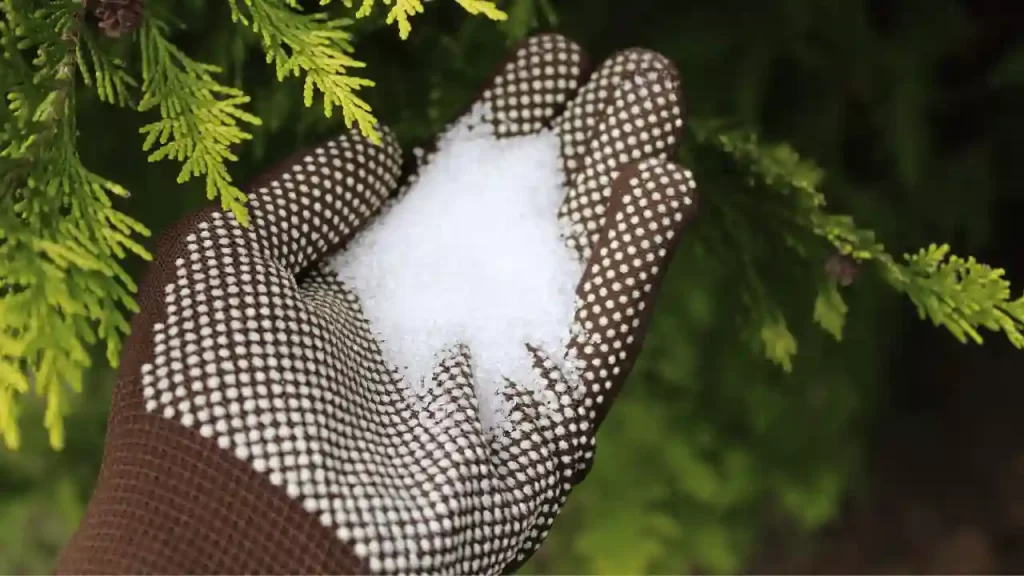
Nutrients and micronutrients play a vital role in tomato plants’ growth, health and yield. If they are not present in balanced quantities, they can endanger your plant’s life.
Essential micronutrients for tomatoes are nitrogen, potassium and phosphorus.
And essential macronutrients are Magnesium, calcium, sulfur and zinc.
I have listed the basic requirements of macros important for your tomato plants:
- Nitrogen: The leaves of plants are totally dependent on the nitrogen component. High amounts of nitrogen can lead to bushy plants, which reduces fruit production or even leads to zero fruits on the plants.
- Phosphorus: Promotes the growth and development of both roots and fruits both. Plants need it at the primary stage of growth and also at the fruiting stage.
- Potassium: It is needed for the plant’s speedy growth and helps to set fruits and flowers on the plants. It promotes the process of photosynthesis by enhancing the level of chlorophyll and makes the plant disease resilient.
Tomato plants require a very small amount of Micronutrients, namely, Magnesium and sulfur. Still, you can never ignore these two micronutrients, as their scarcity can completely stress your tomato plants.
Due to the deficiency of these two micronutrients, the plant would become inefficient in absorbing macronutrients needed for leaf growth, a strong root system and fruit production.
Epsom salt helps to activate enzymes in plants involved in the uptake of important nutrients. Additionally, it contains sulfur which forms amino acids in the plants, building blocks of protein needed in chlorophyll production, and a green pigment in plants which is necessary to complete the photosynthesis process.
You can balance the deficiency of micronutrients in the soil with Epsom salt. It helps the plant uptake essential nutrients and makes your tomato plants healthier.
It is better to directly apply the Epsom salt in the soil when planting the tomatoes in your garden through foliar spray or at the time of watering.
You can only improve your plant’s nutrient uptake if it is going through Magnesium or sulfur deficiency. In such a situation, applying Epsom salt can work like a miracle.
4. Improve growth
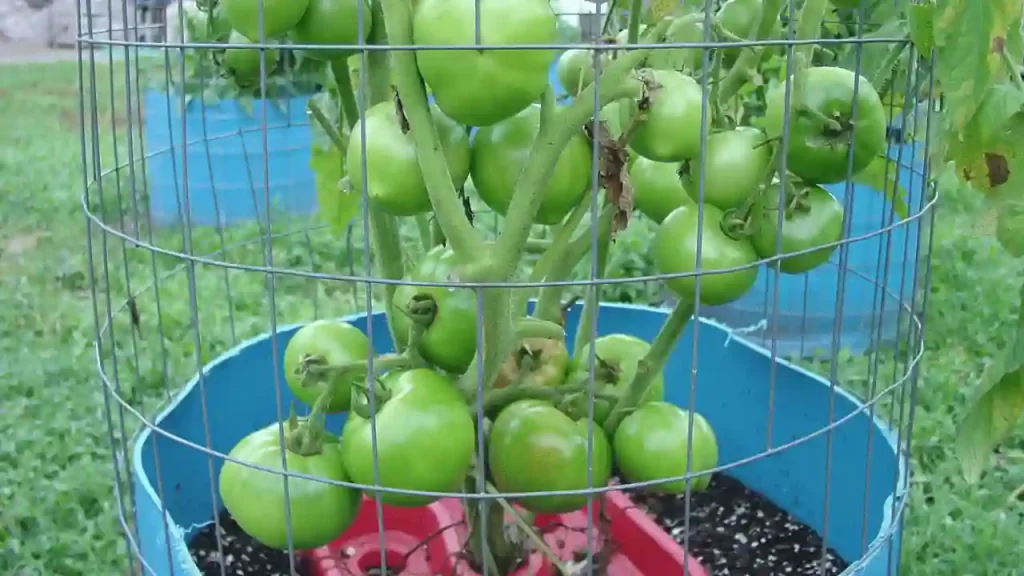
Growing healthy, vigorous and flavorful tomatoes in a very short span of time is a wish of all tomato cultivators. They are ready to do whatever to speed up growing healthy and delicious tomatoes. But does adding Epsom salt can help improve the growth of tomato plants?
If micro and macronutrients are properly balanced, your tomatoes can thrive. Excess or less nutrition in the soil can cause many issues when growing tomatoes; the same rule goes for Magnesium.
The photosynthesis process of the plant is also interrupted. As a result, your plants grow dwarf; leaves turn yellow and fewer fruits are produced on the plants.
Magnesium also strengthens the plant’s cell wall, making them stress and disease-resilient; thus, the overall health and growth of the already healthy plant growth, are promoted.
When you use Epsom salt as a foliar spray or at the time of watering, it enhances the growth of the plants. But always remember to use it in moderation to avoid magnesium toxicity which can eventually stress your plant.
Epsom salt can be a useful supplement for your tomato plant. Adding it to your plant can fulfil the deficiency of Magnesium in your plant and help it thrive.
The caveat
There is a caveat key to successfully using Epsom salt on your tomato plants to avail the four benefits mentioned above. If your plant is going through a deficiency of Magnesium and sometimes sulfur, applying epsom salt can fulfill the deficiency of these two micronutrients.
Excessive use of epsom salt or when your plant is not deficient in Magnesium or sulfur can result in toxicity and be damn harmful to your tomato plants.
According to the study, excessive levels of Magnesium in the soil can stress the root system of plants. It results in an imbalance of micronutrients and causes environmental pollution to spread.
Thus, a soil test before applying epsom salt is best recommended. If you are unsure about magnesium deficiency and cannot even opt for a soil test. In that case, using general fertilizer rather than resolving the issue with epsom salt is much safer.
What Can’t Epsom Salt Do For Tomato Plants?
1. Prevent Blossom End Rot
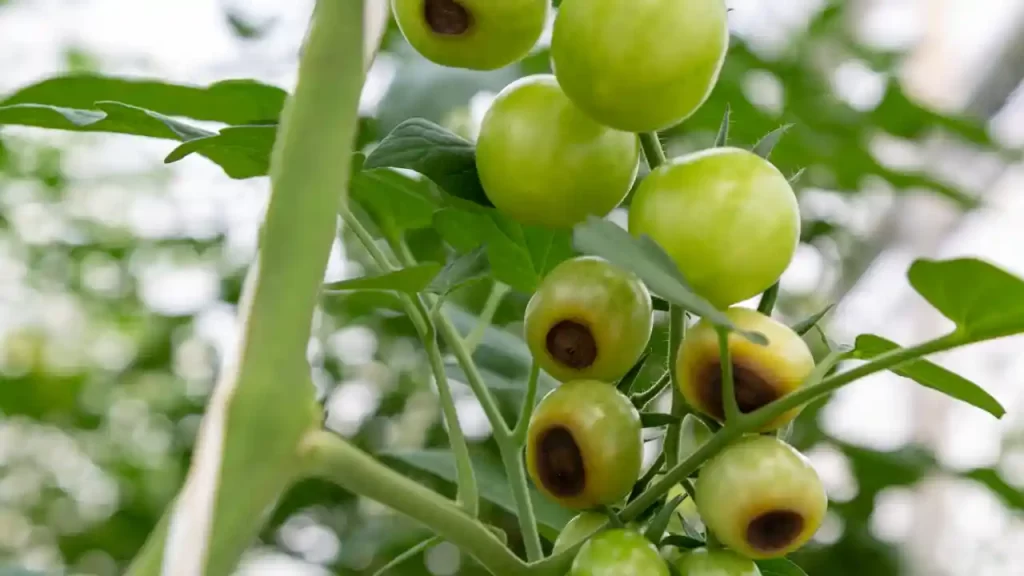
When you notice that your tomatoes are turning brown and rotting from the bottom, that means they are going through bottom-end rot.
When roots become inefficient in delivering calcium to the plant, the plant faces micronutrient deficiency. You might be disturbed seeing your efforts going in the vein as bottom-end rot destroys your tomatoes.
The reasons for calcium deficiency are:
- Inconsistent or less supply of water to the plant.
- Scarcity of calcium in the plants.
- Soil pH imbalance.
- Improper amount of nutrients in the soil.
So you must have noticed that blossom end rot has nothing to do with magnesium deficiency.
- You might have a bad watering habit and cannot resolve this problem by adding Magnesium to the soil.
- The Lack of Calcium content can also not be resolved with epsom salt as it does not contain calcium.
- You can also balance the pH of the soil in some other ways. If you add a very large quantity of epsom salt to soil, then you can balance only its pH, but at the same time, it can create other problems which require a lot of effort to fix.
- Adding epsom salt can be hazardous and even worsen the situation. Please note, using epsom salts, salt fulfills magnesium deficiency. Your plant can experience more blossom-end rot situations.
More absorption of Magnesium can result even less calcium absorption, in the competition of absorption of other micronutrients like calcium. So less amount of calcium is delivered to the plant, and blossom end rot occurs.
Thus, adding epsom salt to the plant when they go through blossom end rot can worsen the situation. So it is better to correct your watering techniques and consistently water them in adequate amounts, pluck the already affected fruits, and watch the result. Yet if the problem is not resolved, test your soil for calcium deficiency and pH balance.
It’s better not to add epsom salt when your plant has a blossom end rot problem.
2. Deter pests

Many remedies are available online to deter pests, and each one is promised to work 100% effectively. Some of the remedies might work, and some are just myths, and using epsom salt to deter pests is also one of the myths.
No scientific evidence supports the effectiveness of epsom salt in deterring hornworms, flies and other tomato pests. It is also not effective to treat any tomato diseases. It is better to opt for any method which is scientifically proven to be effective.
3. Aid tomato seed germination
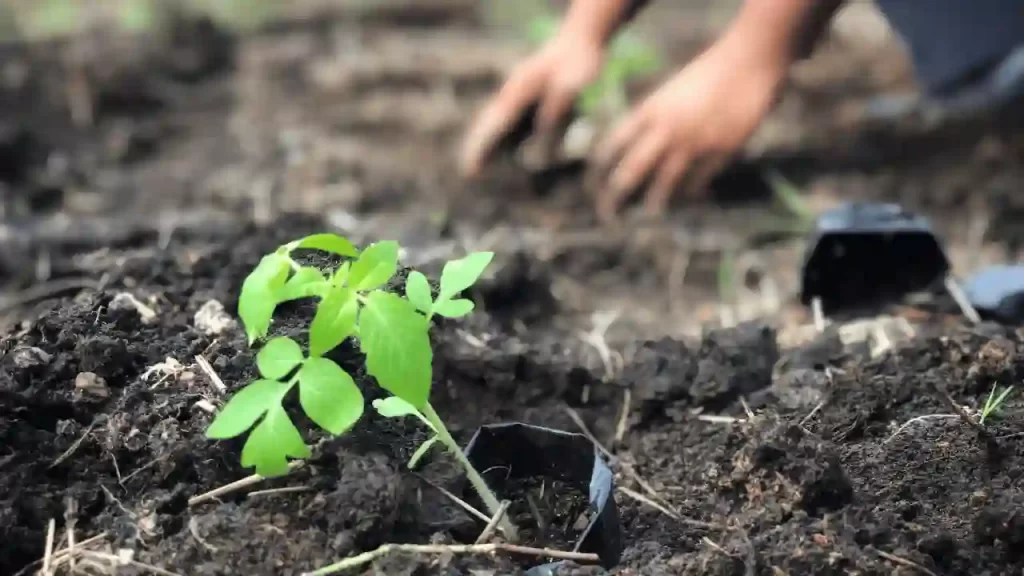
Tomato seed is a unique thing in itself. It has almost all the nutrients in it required to germinate. Thus it is irrelevant to use any extra micronutrients. So adding Magnesium through adding epsom salt is also a waste of time.
But adding epsom salt to the soil can help to treat the magnesium deficiency while transplanting a seedling.
But when your seed is at the germination stage, it requires no extra nutrients from outside. The addition of epsom salt during the germination process can even harm your tomato plants.
4. Feed plants adequately
Epsom salt contains Magnesium and sulfur and fulfills the deficiency of these two micronutrients in tomato plants. But it cannot serve the purpose of complete tomato fertilizer.
In tomato plants, Magnesium is needed in a very small amount as it is a micronutrient. The plant requires fertilizers for a balanced supply of many other nutrients needed for its growth, thriving and production of fruits.
Thus, it is better to use general fertilizer, which can meet the needs of many other nutrients in your tomato plants and help promote the overall growth of the plant.
Only when your plant needs Magnesium, and sulfur application of epsom salt is worth it.
Summary
I have clearly explained all the claims made, which are true and which are not. Your tomato plant can only benefit from using epsom salt when it has magnesium and sulfur deficiencies.
It is best to do a soil test to check the level of these two micronutrients in your soil. Otherwise, excessive Magnesium can result in toxicity, and your plant can face many unsolvable complications. Excessive use can stress the root system of tomato plant and causes an imbalance of micronutrient absorption.
